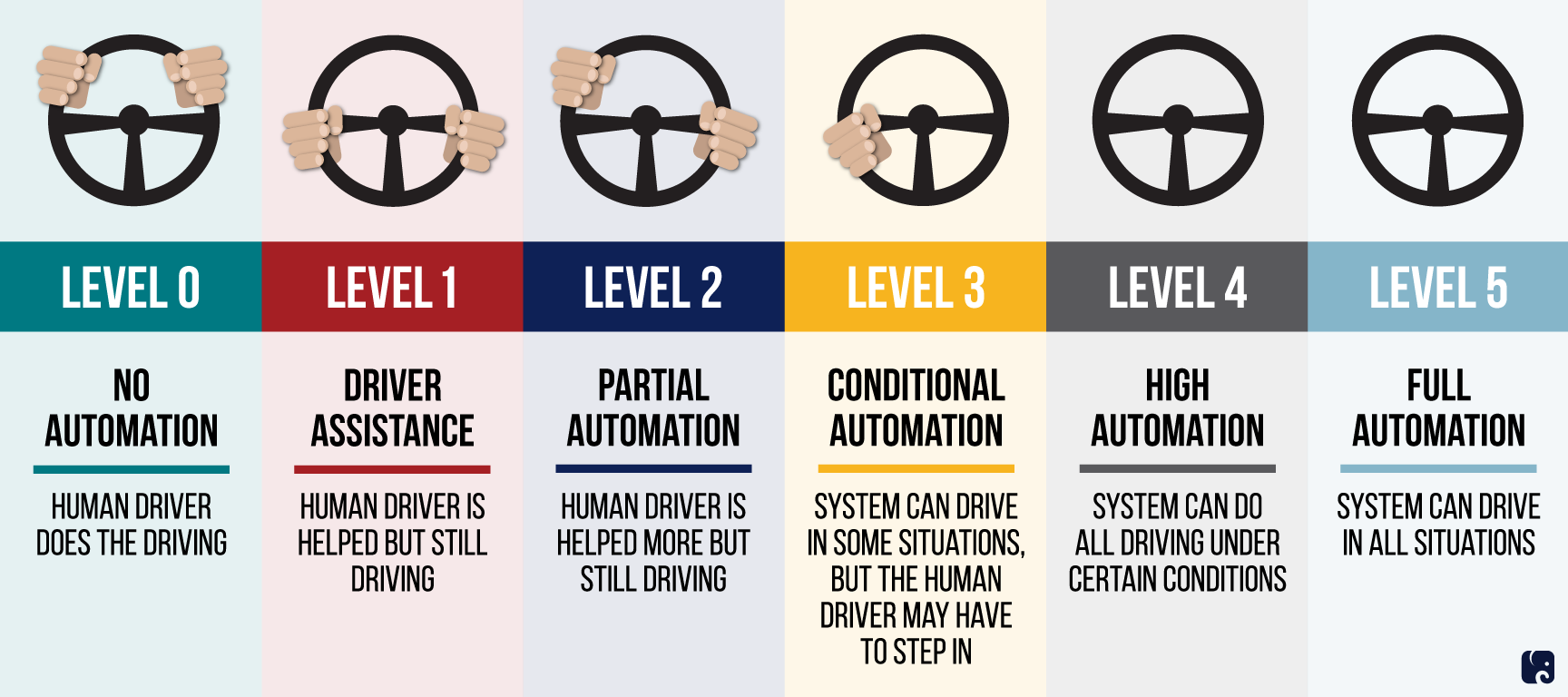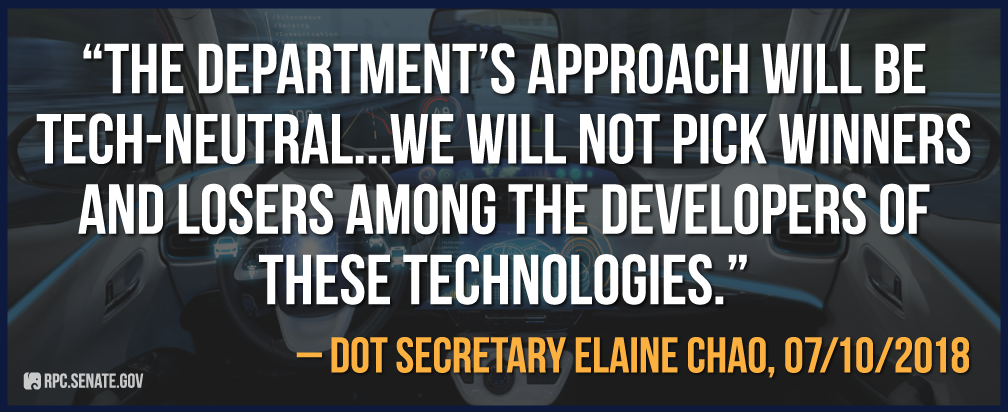What's Happening with Automated Vehicles?
KEY TAKEAWAYS
- Partially automated vehicles already are available to consumers, and eventually vehicles may be able to handle all driving that humans do today.
- Cities and states largely have set the rules for automated vehicle development and testing.
- The federal government, which regulates vehicle safety standards, is taking steps to facilitate the safe development and deployment of increasingly automated vehicles.
As carmakers develop automated vehicles, the federal government will have a role in their testing and deployment. Vehicles with automated driving systems – sometimes called self-driving cars or autonomous vehicles – use sensing technologies and data analysis to drive as humans would. They could have profound effects on society by increasing safety and mobility. Challenges include ensuring the systems are safe, determining who is liable for accidents, and public interest in adopting the technology.
The Road to Autonomous Vehicles

what’s available today?
Entirely self-driving vehicles are not available for U.S. consumers yet, but automakers are selling vehicles with automated features that help drivers with some tasks. The Department of Transportation uses a scale of 0 to 5 based on how much a vehicle’s automated system can do versus what the human driver must do. A level 0 vehicle has no automation, while a level 5 vehicle can drive in all situations, and the human is a passenger. The most advanced vehicles available today can steer and control speed under certain conditions, but a human still has to pay attention and do other parts of driving. These are considered level 2. Companies are working on more advanced vehicles, and public testing is underway in limited circumstances.
Car manufacturers and technology companies are making large investments in automated vehicles. Some plan to redesign the vehicle without pedals or steering wheels, others are building the underlying automated driving systems, and still others are focusing on specific parts of the supply chain. Transportation Secretary Elaine Chao noted in June, “more than 1,400 autonomous vehicles are being tested in the U.S. by more than 80 companies … in 36 states plus Washington, D.C.” It remains to be seen how long it will take until highly automated vehicles are widely used, but all levels of government are concerned with ensuring they are safely tested and deployed.
what states have done
The federal government – through the National Highway Traffic Safety Administration – regulates vehicle design, construction, and performance. States are responsible for licensing, vehicle registration, insurance regulation, and similar matters. Without federal regulations, states and cities have been acting on their own; more than two dozen states have passed laws on the subject. Governors in 11 states have issued executive orders meant to prepare for testing of the vehicles. Some of these laws define terms differently, and some require a human driver in the vehicle at all times while others do not. These and other differences, such as differing regulations on the performance of vehicles, could complicate the eventual deployment across state lines.
executive branch actions
Since 2016, DOT has released three guidance documents. The most recent one, from October 2018, stated the department’s principles for automated vehicles across modes of transportation. The principles include promoting safety, updating regulations, and remaining unbiased toward different technologies. The guidance offered recommendations for states and localities, such as to assess whether their road markings and signs are ready to support safe autonomous vehicle use and to adopt common terms and definitions that the industry has developed. In March 2019, Secretary Chao also started a multi-modal council at the department to address regulatory barriers to new transportation technologies, including autonomous vehicles.

Some agencies at the department have begun seeking public input on existing regulations it would need to revise to accommodate vehicles with higher levels of automation. For example, NHTSA asked how it should measure and test compliance with safety standards meant to prevent crashes if a vehicle does not have steering wheels, brake pedals, or similar manual controls. The Federal Motor Carrier Safety Administration has sought comment on which regulations it would need to amend to allow the safe introduction of automated commercial vehicles.
congressional action
Congress has held hearings on the benefits, challenges, and regulatory environment surrounding automated vehicles. In 2017, the House passed a bipartisan bill addressing automated vehicles, and the Senate Commerce Committee approved its own bill, though that bill did not reach the Senate floor. While the bills took different approaches in some areas, both sought to clarify the federal role. The House bill would have prevented states and localities from passing laws or regulations on automated vehicle design, construction, or performance that were different from federal standards. The Senate bill also would have preempted state rules on certain subjects such as crashworthiness and human-machine interactions – but only until NHTSA issued new safety standards on those subjects. Both bills addressed safety and security issues. They also would have increased the number of vehicles DOT could exempt from existing federal motor vehicle safety standards, to allow private industry to test and operate more automated vehicles.
Next Article Previous Article
